Complete Solutions to Exercises of chapter THERMAL AND ELECTRIC EFFECT oF CURRENT of Class 12 book with complete answers and questions
| Class 12 | PHYSICS |
| Chapter | THERMAL AND ELECTRIC EFFECT oF CURRENT |
| CP SINGH | Exercises |
| Number Of Questions | 100 |
| Academic Year | 2023-24 |
According to Joule's law, if the potential difference across a conductor having a material of specific resistance remains constant, then the heat produced in the conductor is directly proportinal to
01:47View SolutionIf the current in an electric bulb drops by `1%` the power decreases by
03:38View Solution(a) When a cell sends current through a resistance `R_(1)` for time `t`, the heat produced in the resistor is `Q`. When the same cell sends current through another resistance `R_(2)` for time `t` the heat porduced is again `Q` . Find internal resistance of the cell.
(b) An electric kettle has coil `A` is swithched on, the water boils in 10min. and when coil b is switched on the water boils in `20min`. Calculate the time taken by the water to boil if the coils connected in (i) series and (ii) parallel are swithched on.
(c) The emf of battery `E` in the circuit shown in the figure is 15V and internal resistance `0.5ohm` (i) What is the current drown from the battery? (ii) How much power is consumed in `6 ohm` resistance?
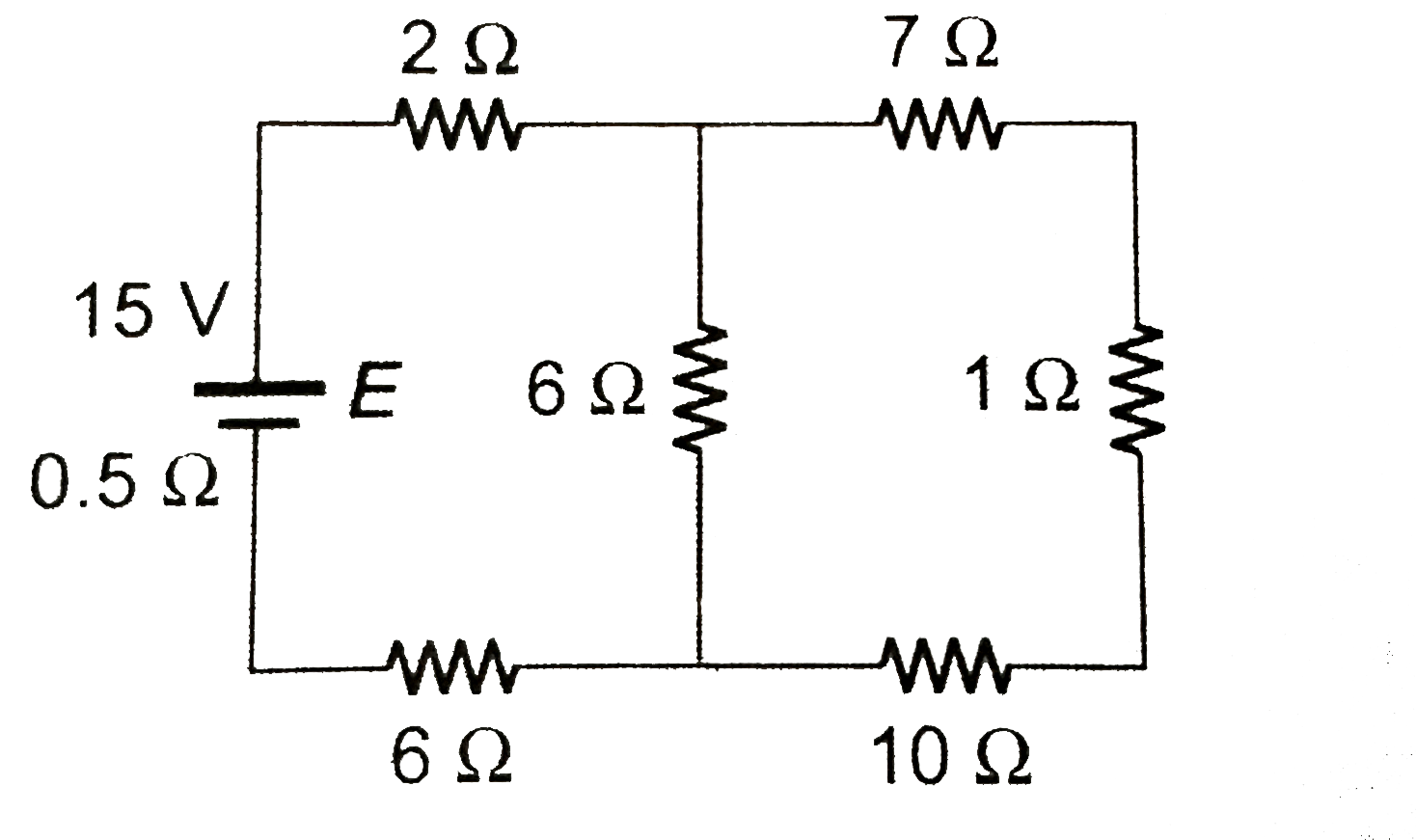
(d) A `500W` heating unit is designed to opreate from a `115V` line.
(i) By what percentage will its heat output drop if the line voltage drops to `110V`. Assuming no change in resistance?
(ii) Taking variation of resistance with temperature into account. would the actual heat output drop be larger or smaller than case(i)
(e) If emf of the cell is `1.8V` and its internal resistance `2//3 Omega` for the circuit shown in the figure what is the (i) current in `3 ohm` resistance? (ii) Power consumed by the circuit from the battery?
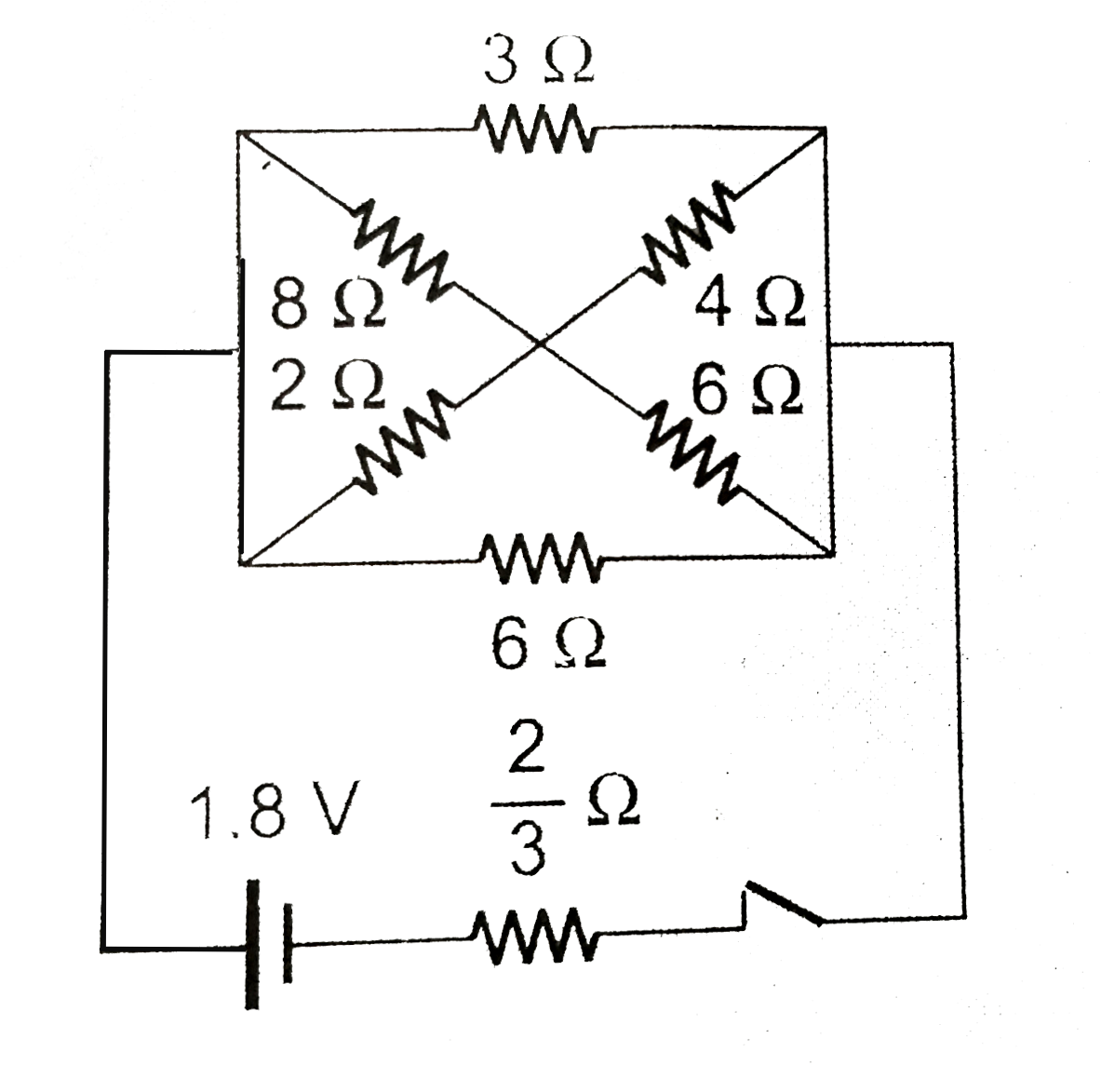
(i) for what value of `R` , power in `R` is maximum?
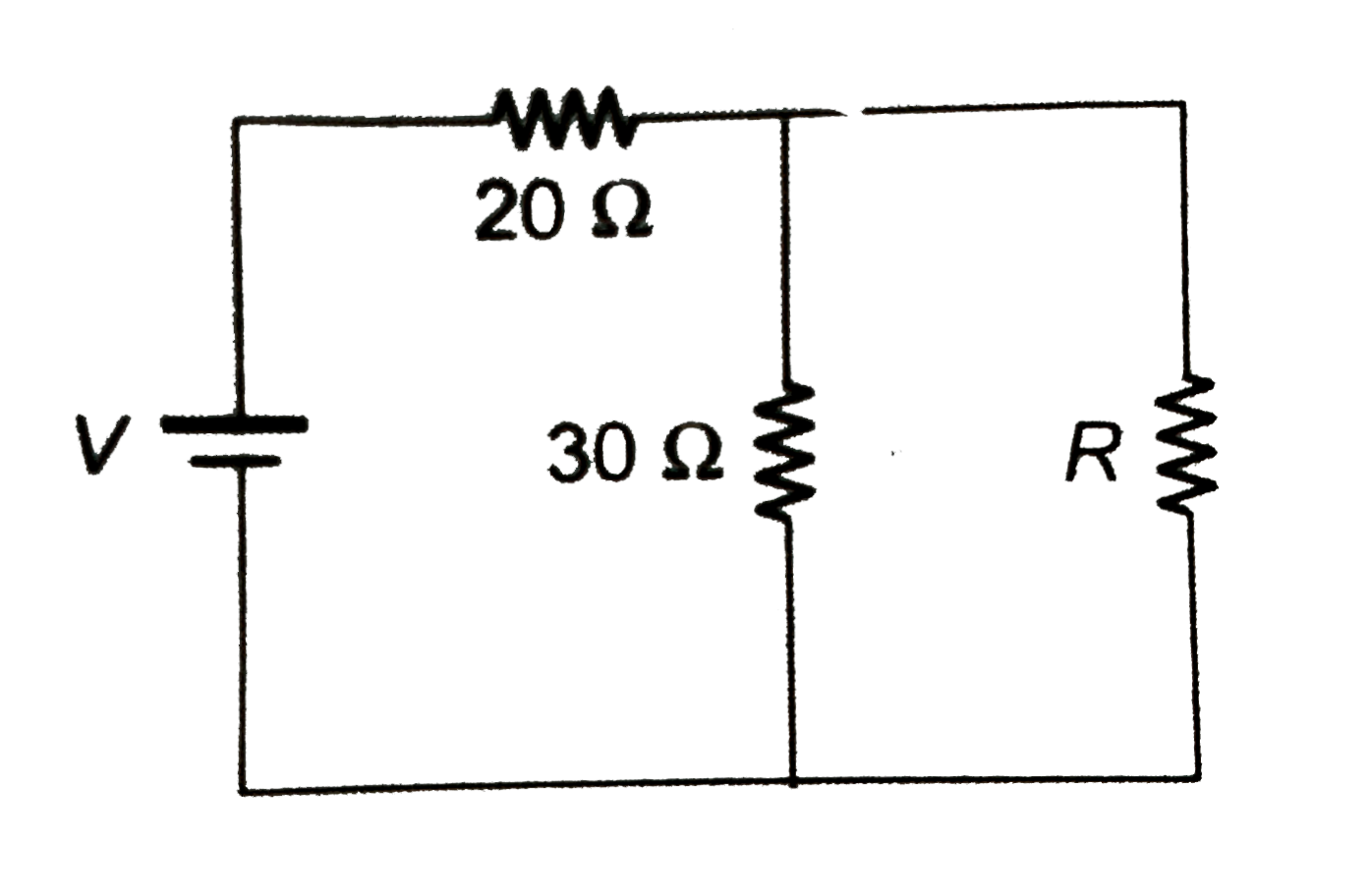 .30:01View Solution
.30:01View SolutionTwo resistances , connected in parallel across a source of negligible interna resistance, consumes four times the power that they would consume when connected in series across the same source. If one of the resistances is `10 Omega` the other is
02:09View SolutionA heating coil transforms `100J` of electrical energy into heat energy per second. The coil is cut into two halves and both the halves are joined togeter in parallel to the same source. Now the energy transformed per second will be
02:30View SolutionA constant voltage is applied between the two ends of a uniform metallic wire. Some heat is developed in it. The heat developed is doubled if
05:59View SolutionYou are given a resistance coil and a battery. In which of the following cases is largest amount of heat generated?
03:24View SolutionTwo indential heated produce heat `H_(1)` in time `t` when connected in parallel across the main supply. They produce heat `H_(2)` in time `t` when connected in series. Then `H_(1)//H_(2)` is
01:45View SolutionA `500W ` heating unit is designed to operate from a `115 "volt"` line. If the line voltage drop to `110 "Volt"` , the percentage drop in heat output will be
02:45View SolutionThree equal resistor connected in series across a source of enf together dissipate `10 Watt`. If the same resistors aer connected in parallel across the same emf, then the power dissipated will be
02:05View SolutionA current of `3 A` flows through the `2 Omega` resistor as shown in the circuit. The power dissipated in the `5 Omega` resistor is
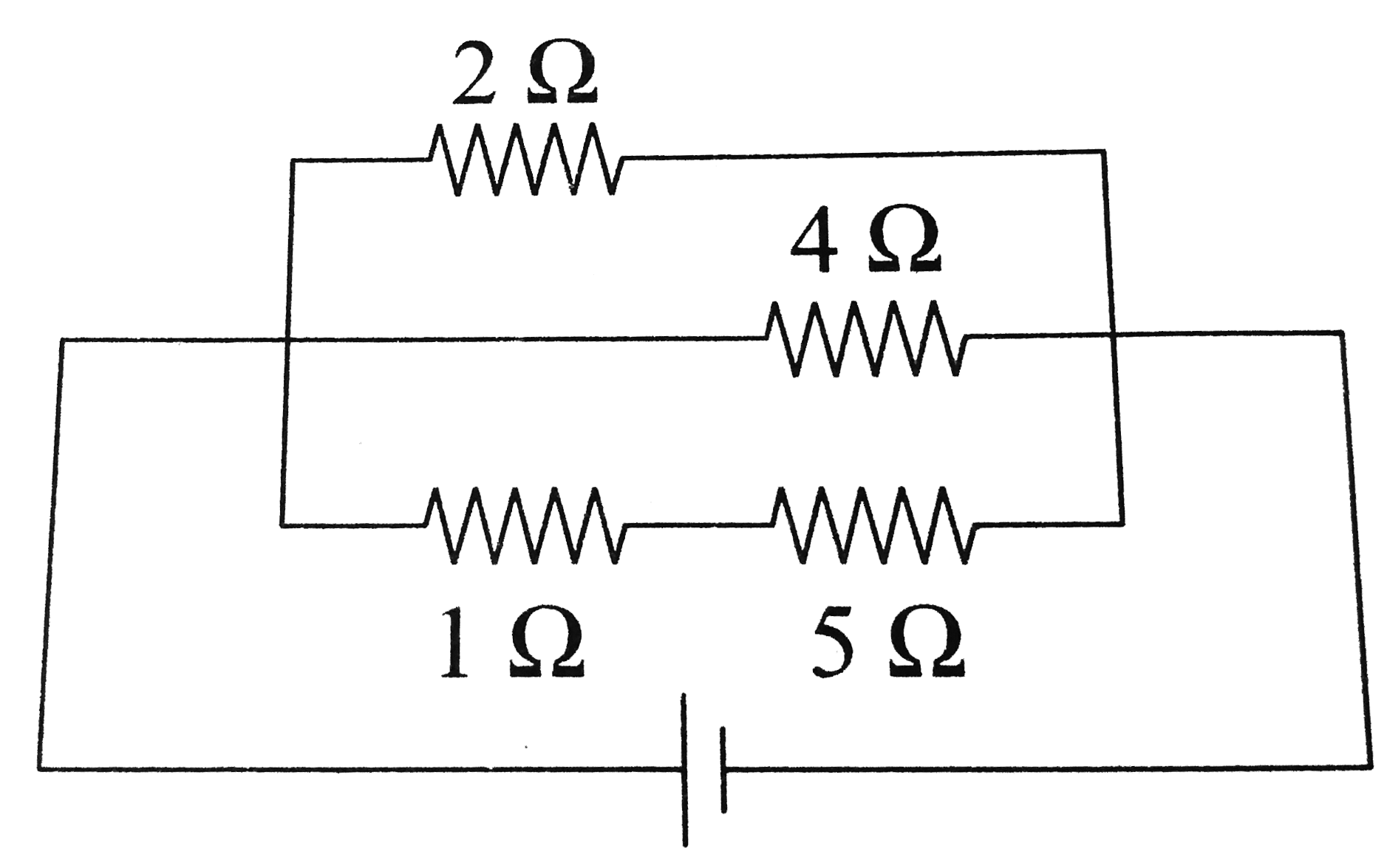 02:19View Solution
02:19View SolutionA heater coil is cut into two parts of equal length and one of them is used in the leader. The ratio of the heat procued by this half coil to that by the original coil is
02:25View SolutionThe three resistance of equal value are arranged in the different combination shown below. Arrange them in increasing order of power dissipation.
(I)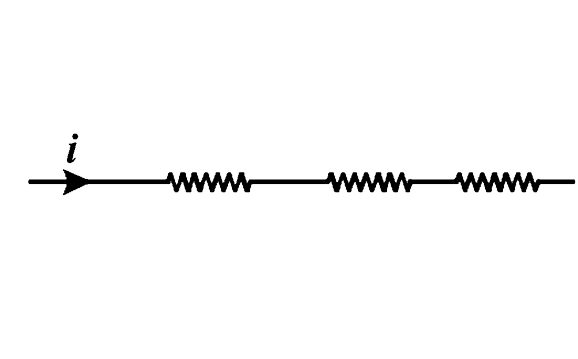 (II)
(II) 
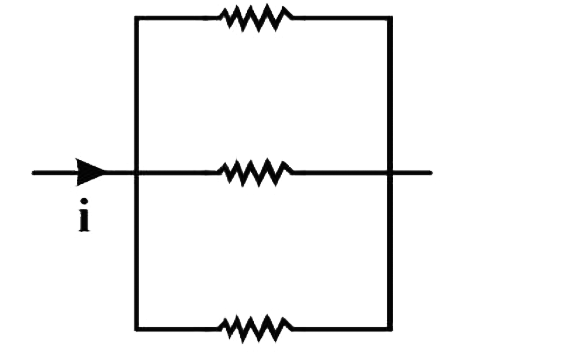 (IV)
(IV)  05:56View Solution
05:56View SolutionFor ensuring dissipation of same energy in all three resistors `(R_(1), R_(2), R_(3))` connected as shown in figure, their values must be related s
 05:13View Solution
05:13View SolutionA wire of length L and 3 identical cells of negligible internal resistance are connected in series. Due to the current, the temperature of the wire is raised by `DeltaT` in a time t. A number N of similar cells is now connected in series with a wire of the same material and cross-section but of length 2L. The temperature of the wire is raised by the same amount `DeltaT` in the same time t. the value of N is
09:46View SolutionAn electric kettle has two coils. When one coil is switched an it takes `5` minutes to boil water and when second coil is switched on it takes `10` minutes .How long will it take to boil water, when both the coil are used in series ?
04:59View SolutionAn electric kettle has two heating coils. when one coil is used, water in the kettle boils in 5 minutes, while when second coil is used, same water boils in 10 minutes. If the two coils, connected in parallel are used simultaneously.the same water will boil in time
02:55View SolutionAn electric kettle of `1200W`has 1 kg water at `20^@C`. The water equivalent of the kettle is `500g`. The time required to heat water from `20^(@) to 100^(@)C` will be (specific heat of water = `4200 J//kg^(@)C)`.
02:20View SolutionWater of volume 2 litre in a container is heated with a coil of `1kW at 27^@C.` The lid of the container is open and energy dissipates at rate of `160J//s.` In how much time temperature will rise from `27^@C to 77^@C` Given specific heat of water is
`[4.2kJ//kg`]03:51View SolutionThe power dissipated `6 Omega` resistor is
 02:50View Solution
02:50View SolutionFigure `7.37` shows a network of three resistances. When some potential difference is applied across the network , thermal powers dissipated by `A, B and C` are in the ratio
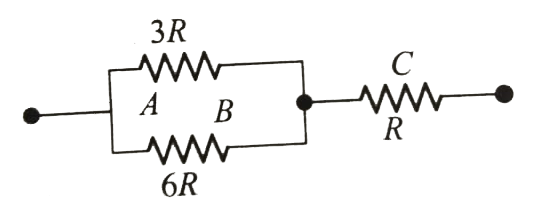 06:32View Solution
06:32View SolutionWhich of the following plots may represent the thermal energy produced in a resistor for a given current as a function of time?
 01:27View Solution
01:27View SolutionThe charge flowing in a conductor varies with times as `Q = at - bt^2.` Then, the current
03:18View SolutionThe charge flowing through a resistance `R` varies with time `t as Q = at - bt^(2)`. The total heat produced in `R` is
07:17View SolutionTwo resistors having equal resistances are joined in series and a current is passed through the combination. Neglect any variation in resistance as the temperature changes. In a given time interval,
02:34View SolutionA cell of emf `epsilon` and internal resistance `r` drives a current `i` through an extermal resistance `R`
(i) The cell suppllied `epsilon i` power
(ii) Heat is produced in `R` at the rate `epsilon i`
(iii) Heat is produced in `R` at the rate `epsilon I ((R )/(R+r))`
(iv) Heat is produced in the cell at the rate `epsilon i((r ?/(R+r))`03:42View SolutionCurrent `i` is being driven through a cell of emf `epsilon` and internal resistance3 `r`, as shown

(i) the cell absorbs energy at rate of `epsilon i`
(ii) The cell stores chemical energy at the rate of `(epsilon i - i^(2)r)`
(iii) The potential differnece across the cell is `epsilon+ir`
(iv) some heat is produced in the cell02:44View SolutionIf power in external resistance `R` is maximum, then
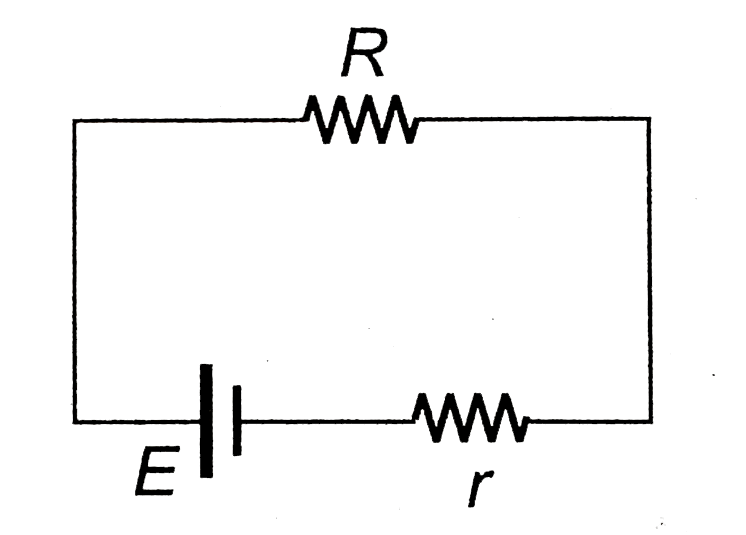
(i) `R = r`
(ii) Power in `R` is `(E^2)/(4R)`
(iii) Input power is `(E^2)/(2R)`
(iv) Efficiency is `50%`03:07View SolutionThree equal resistace, each of `R` ohm, are connectedd as shown in the figure. A battery of `2V` and of internal resistance `0.1` ohm is connected across the circuit. The value of `R` for which the heat generated in the circuit maximum will be
 02:38View Solution
02:38View SolutionTwo identical batteries each of emf `E= 2`volt and internal resistance `r=1` ohm are available `t`. produce heat in an external resistance by passing a current through it. What is the maximum power that can be developed across an external resistance `R` using these batteries?
05:18View SolutionA `100W, 200V` bulb is operated on a `110V` line. The power consumed is
01:29View SolutionTen `50W` bulbs are operated for 10 hours per day. The energy consumed in `kWh` in a 30 day month is
02:22View SolutionAn electric bulb rated for `500 W` at `100 V` is used in a circuit having a `200 V` supply. The reistance `R` that must be put in series with bulb, so that the bulb delivers `500 `W is ……….`Omega`.
04:31View SolutionAn electric bulb is designed to draw `P_(0)` power at `V_(0)` voltage. If the voltage is `V`, it drawas power. Then
01:30View SolutionTwo electric bulbs rated `25 W , 220 V and 100 W , 220 V` are connected in series across a `220 V` voltage source . The `25 W and 100 W` bulbs now draw `P_(1) and P_(2)` powers , respectively.
04:19View SolutionA `100W` bulb and a 25W bulb are desigened for the same voltage. They have filaments of the same length and material. The ratio of the diameter of `100W` bulb to that of the `25W` bulb is
04:06View SolutionTwo electric bulbs, one of `200V, 40W`, and the othere `220V`, `100W` are connected in a house wiring circuit
01:57View SolutionA `200W` and a `100W` , both meant for operation a t `220V` are connected to a `220V` supply. The total power consumed by them will be
(i) 300W, if connected in series
(ii) 300W, if connected in parallel
(iii) `(200)/(3)W`, if connected in series
(iv) `(200)/(3)W`, if connected in parallel03:59View SolutionTwo bulbs one of `60W` and the other of `100W` , are connected in series across a supply
(i) The current through each is same
(ii)The potential drop across `60W` bulb is more
(iii) The potential drop acorss each is the same
(iv) The current through `100W` bulb is more03:34View SolutionTwo bulb one of 60W and the other of 100W , are connected in a house wiring circuit
(i) The current through each is same
(ii)The potential drop across each is the same
(iii) The current through `100W` bulb is more
The potential drop acorss `100W` bulb is more03:23View SolutionA `25W-120V` bulb and a `100W-120V` bulb are connected in series across `120V` line. Which bulb will be brighter?
02:40View SolutionIf two bulbs of `25 W and 100 W` rated at `220 V` are connected in series across a `440 V` supply, will both the bulbs fuse ? If not which one ?
05:51View Solution`n` identical light bulbs, each designed to draw `P` power from a certain voltage supply , are joined in series across that supply. The total power which they will draw is
03:31View SolutionTwo tungsten lamps `A` and `B` of resistances `R_(1)` and `R_(2)` respectively are connected in a circuit of negligible internal resistance, if `R_(1) gt R_(2)`
(i) The lamp `A` will glow brightly if lamps are connected in series
(ii) the lamb `A` will glow brightly if lamps are connected in parallel
(iii) the lamp `B` will glow brightly if lamps are connected in series.
(iv) the lamb `B` will glow brightly if lamps are connected in parallel03:22View SolutionThese are two electric bulbs `A` and `B` rated `50W-100V`, `100W-100V` respectively. The bulbs are connected with a `200V` dc supply.
The bulb `A` will fuse, if in series
(ii) The bulbs `B` will fuse , if in series
The bulb `A` will fuse, if in parallel
(iv) The bulb `B` will fuse if in parallel04:04View SolutionA standard 50W electirc bulb in series with a room heater is connected across the mains. If the 50W bulb is replaced by `100W` bulb the heater output will
02:29View SolutionTwo electric bulbs `A` and `B` are designed for the same voltage. Their power ratings are `P_(A)` and `P_(B)` respectively with `P_(A) gt P_(B)` . If they are joined in series across `V` voltage supply
03:00View SolutionA series circuit consists of three identical lamps connected to a battery as shown in Fig. `7.13`.
when the switch `S` is closed, what happens
(a) to the intensities of lamps `A and B`,
(b) to the intensity of lamp `C`,
( c ) to the current in the circuit , and
(d) to the voltage drop across the three lamps ?
Does the power dissipated in the circuit increase, decrease, or remain the same ?
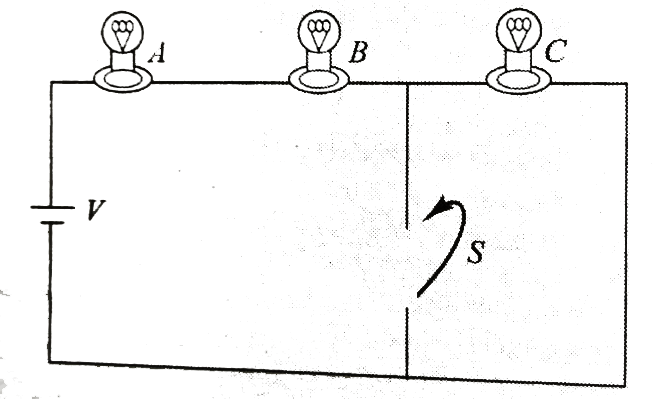 06:18View Solution
06:18View SolutionA heater is designed to operate with a power of `1000W` in a `100 V` line. It is connected in combination with a resistance of `10 Omega` and a resistance `R`, to a `100 V` mains as shown in figure. What will be the value of `R` so that the heater operates with a power of `62.5W`?
 05:27View Solution
05:27View SolutionA `100 W` bulb `B_1`, and two` 60 W` bulbs `B_2 `and `B_3` are connected to a `250 V` source as shown in the figure. Now `W_1,W_2` and `W_3` are the output powers of the bulbs `B_1, B_2` and `B_3` respectively. Then
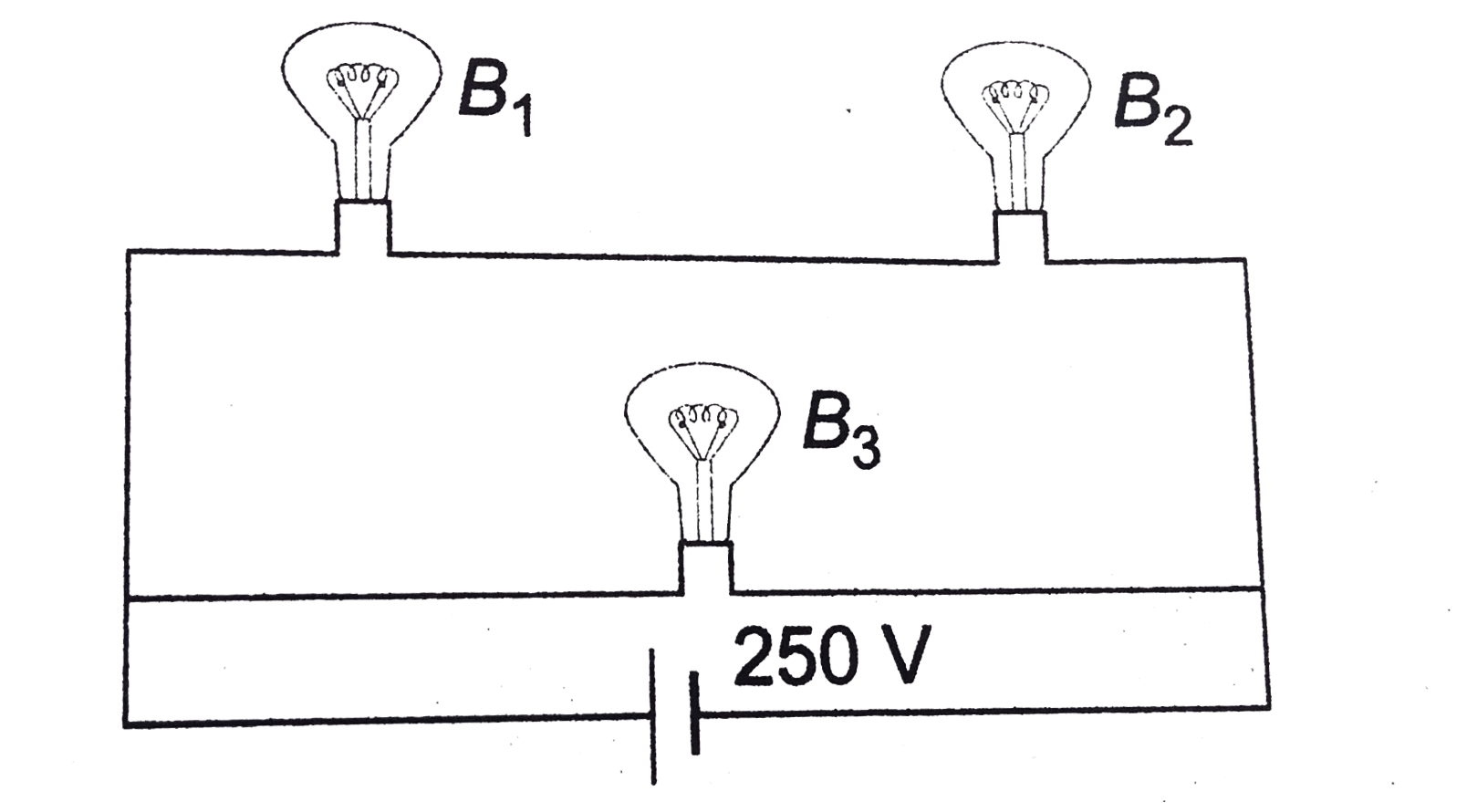 06:54View Solution
06:54View SolutionThree electric bubls of 200W, 200 W and 400W are shown in figure. The resultant power of the combination is
 02:59View Solution
02:59View Solution`B_(1), B_2 and B_3` are the three identical bulbs connected to a battery of steady emf with key `K` closed. What happens to the brightness of the bulbs `B_(1)` and `B_(2)` when the key is opened?
 04:53View Solution
04:53View SolutionIncandescent bulbs are designed by keeping in mind that the resistance of their filament increases with the increase in temperature. If at room temperature, `100W, 60W and 40W` bulbs have filament resistances `R_(100), R_(60) and R_(40)`, respectively, the relation between these resistances is
03:07View SolutionThe resistance of ammeter is `R_(0)`
 04:50View Solution
04:50View SolutionThe material of fuse wire should should have
02:39View SolutionWhat is immeterial for an electric fuse wire ?
04:35View SolutionThe maximum current that flows through a fuse wire before it blows out varies with its radius as
03:10View SolutionThe production of emf by maintaining a difference of tempreture between the two junctions of two different metals is known as
01:32View SolutionIn a thermocouple, which of the following statements is not true?
02:52View SolutionIf the cold junction of thermocouple is kept at `0^(@)C` and the hot junction is kept at `T^(@)C`, then the relation between neutral temperature `(T_(n))` and temperature of inversion `(T_(i))` is
01:29View SolutionIf for a thermocouple `T_(n))` is the neutral temperature, `T_(c )` is the tempreture of the cold junction and `T_(i))` is the temperature of inversion, then
01:25View SolutionNeutral temperature of a thermocouple is define as the temperature at which
01:34View SolutionThe expression for thermo emf in a thermocouple given by the relation `E=40theta-(theta^(2))/(20)`, where `theta` is the temperatue difference of two junctons. For this, the neutral temperature will be
01:39View SolutionThermoelectric constant of a thermocouple are `alpha` and `beta`. Thermoelectric power at inversion tempreture is
02:27View SolutionIf `E=at+bt^(2)`, what is the neutral temperature
01:34View SolutionFaraday's laws of electrolysis are related to
01:55View SolutionThe relation between faraday constant `(F)`, chemical equicalent `(E)` and electrochemical equivalent `(Z)` is
01:58View SolutionTo deposit one `gm` equivalent of an element at an electrode. The quantity of electricity needed is
01:32View SolutionIn producing chlorine through electrolysis `100 W` power at `125 V` is being consumed. How much chlorine per min is liberated ? `ECE` of chlorine is `0.367 xx 10^(6) kg//C`
03:28View SolutionIf nearly `10^(5)` coulomb liberate `1 g` equivalent of aluminium, then the amount of aluminium (equivalent weight `9`) deposited through electrolysis in `20` minutes by a current of `50` amp will be
02:47View Solutionwhen a copper votameter is connected with a battery of emf `12V,2g` of copper is deposite in `30` min. if the same voltmeter is connected across a `6V` battery then the mass of copper deposite in `45` min would be
02:44View SolutionIn a copper voltmeter, mass deposite in `30` seconds is `'m'` gram. If the time-current graph is as shown in figure. `ECE` of copper is
 02:50View Solution
02:50View SolutionIn an electroplating experiment, `m` gram of silver is deposited when `4` ampere of current flows for `2` minute. The amount (in`g`) of silver deposite by `6` ampere of current for `40` second will be
01:52View SolutionSilver and copper voltmeters are connected in parallel with a battery of emf `12V`. In `30` minutes, `1g` of silver and `1.8g` of copper are liberated. The power supplied by the battery is
`(Z_(Cu) = 6.6xx10^(-4) g//C and Z_(Ag) = 11.2xx10^(-4)g//C`)03:57View SolutionTwo voltameters, one of copper and another of silver, are joined in parallel. When a total charge q flows through the voltameters, equal amount of metals are deposited. If the electrochemical equivalents of copper and silver are `Z_1` and `Z_2` respectively the charge which flows through the silver voltameter is
05:16View SolutionThe current flowing in a copper voltmeter is `1.6A`. The number of `Cu^(++)` ions deposite at the cathode per minute are
01:58View SolutionThe charge on the capacitor is
 02:12View Solution
02:12View SolutionThe charge on capacitor `4muF` is
 02:02View Solution
02:02View SolutionThe charge on capacitor is
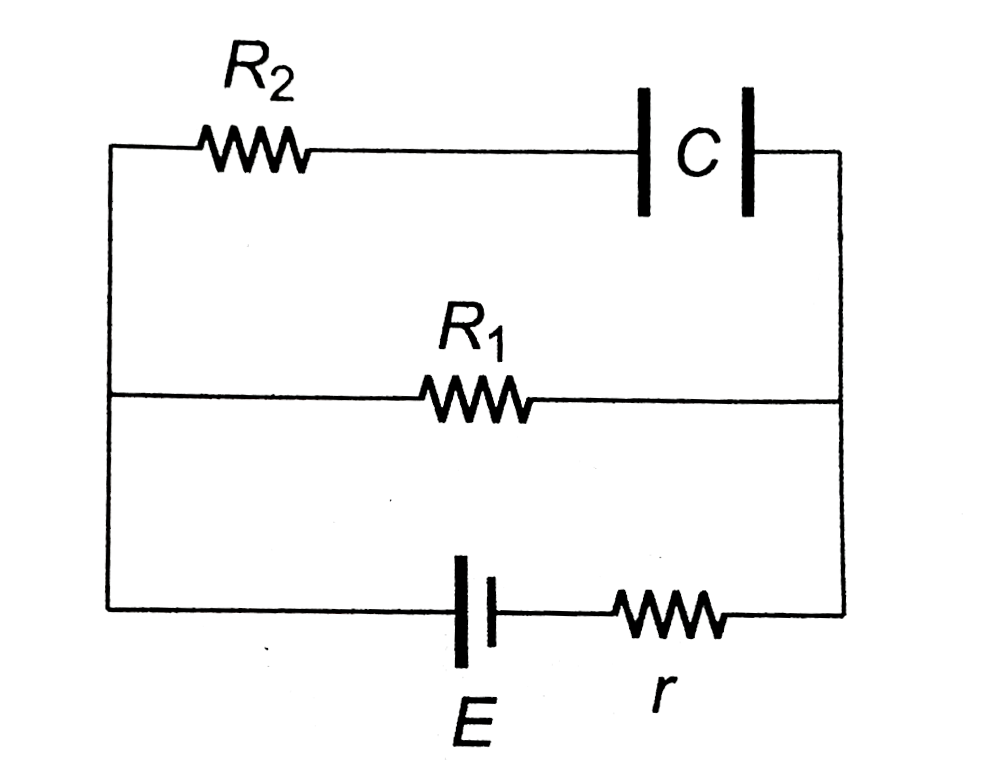 01:50View Solution
01:50View SolutionIn the following diagram
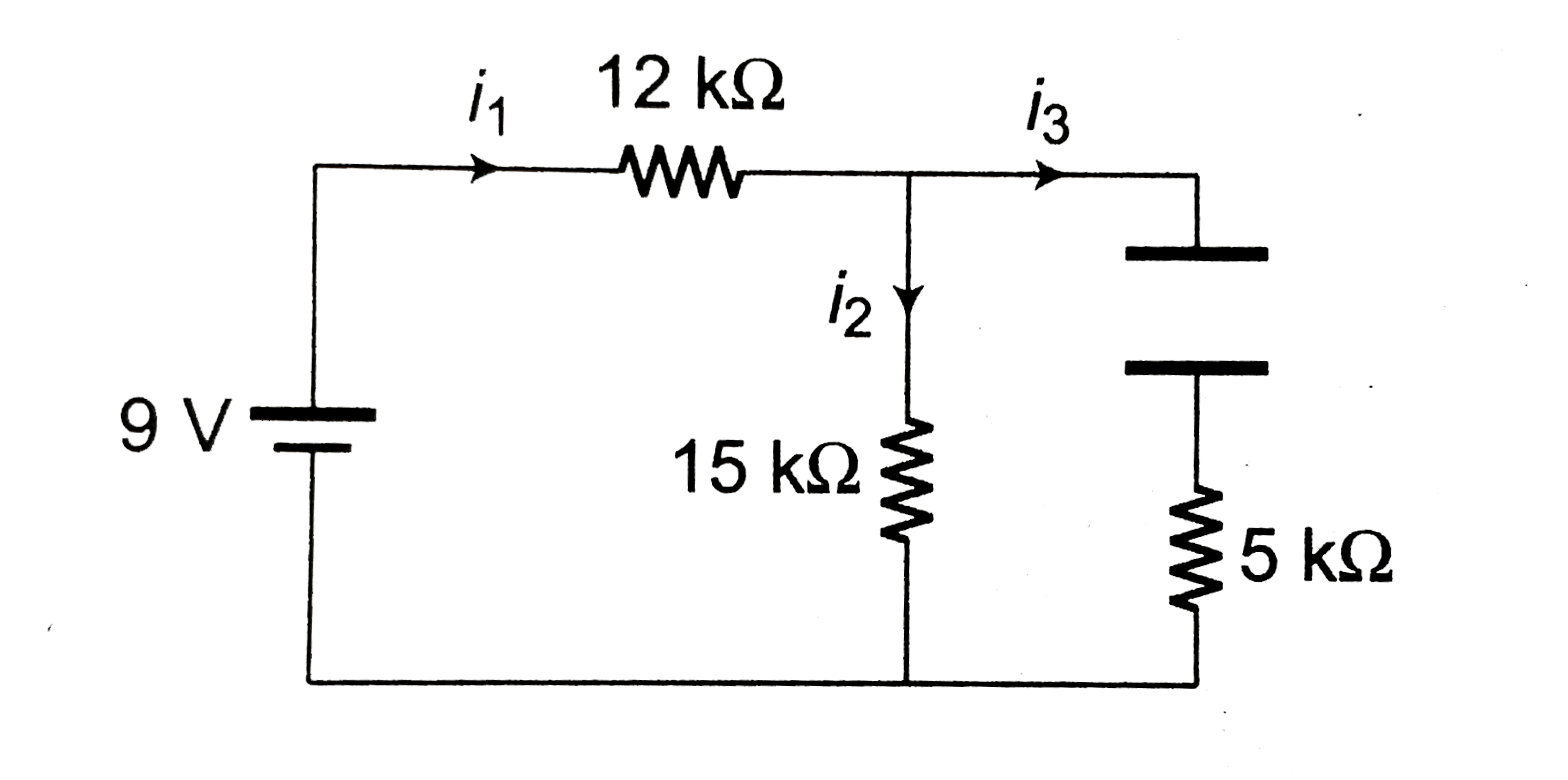 01:54View Solution
01:54View SolutionA part of a circuit in steady state along with the currents flowing in the branches,the values of resistances,etc, is shown in figure.Calculate the energy stored in the capacitor.
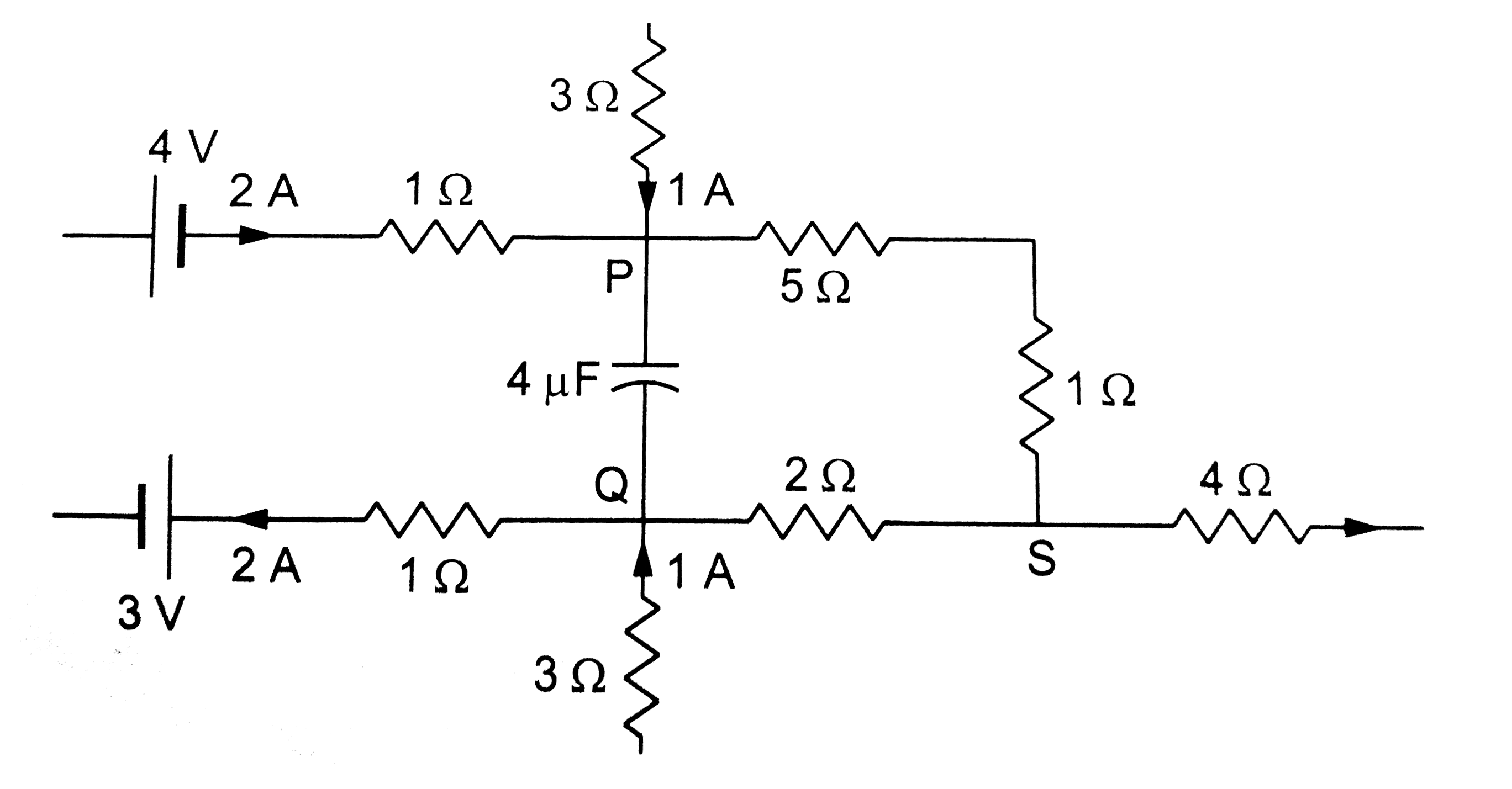 02:43View Solution
02:43View SolutionIn the diagram shown find the potential difference between the points A and B and between the points B and C in the steady state.
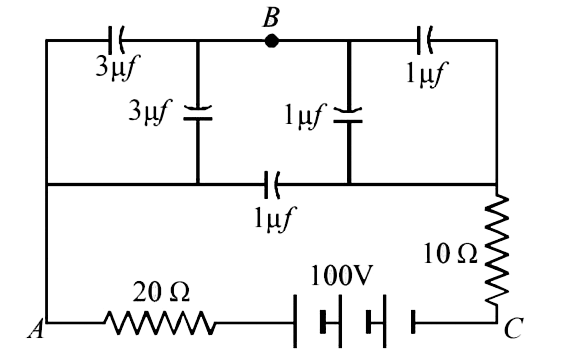 09:23View Solution
09:23View SolutionDetermine the current through the battery in the circuit shown in figure.

(a) immediately after the switch S is closed
(b) after a long time.01:49View SolutionThe ratio of energy stored in capacitors `C_(1)` and `C_(2)`
 04:02View Solution
04:02View Solution(a) Find potential difference between `A` and `B` and `C`.

(b) Find potential difference across capacitor `C`.


(i) Find ratio of energy stored in capacitors, `C_(1)` and `(C_2)`
(ii) If battery of emf of `2E` is short -circuited, find charge flown in battery of emf `4E`.14:53View SolutionIn the circuit shown, the cell is ideal , with `emf= 15 V`. Ecah resistance is of `3 Omega.` the potential difference across the capacitor is
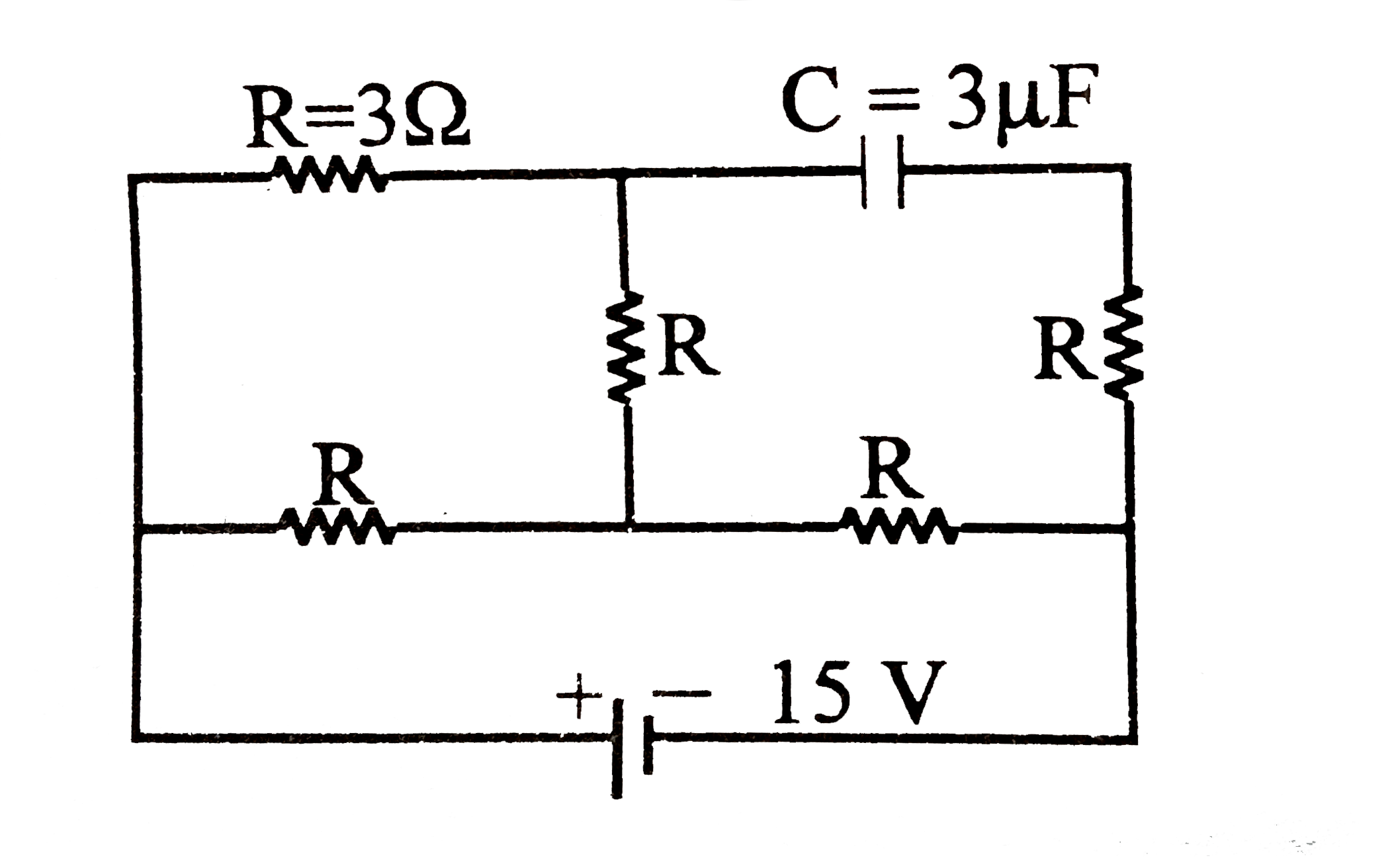 04:54View Solution
04:54View SolutionIn the circuit shown, the cell is ideal with emf = `2V` . The resistance of the coil of the galvanometer `G` is `1 Omega`.

(i) No current flows in `G`
(ii) `0.2A` current flows in `G`
(iii) potential difference across `C_(1) is 1V`
(iv) Potential difference across `C_(2)` is `1.2V`05:37View SolutionA capacitor charges from a cell through a resistance. The time constant is `tau`. In what time will the capacitor collect `10%` of the final charge?
02:10View SolutionA capacitor is charged and then made to discharged through a resistance. The time constant is `tau`. In what time will the potential difference across the capacitor decreases by `10%`?
02:35View SolutionIn the circuit shown in fig. when the switch is closed, the capacitor charges with a time constant
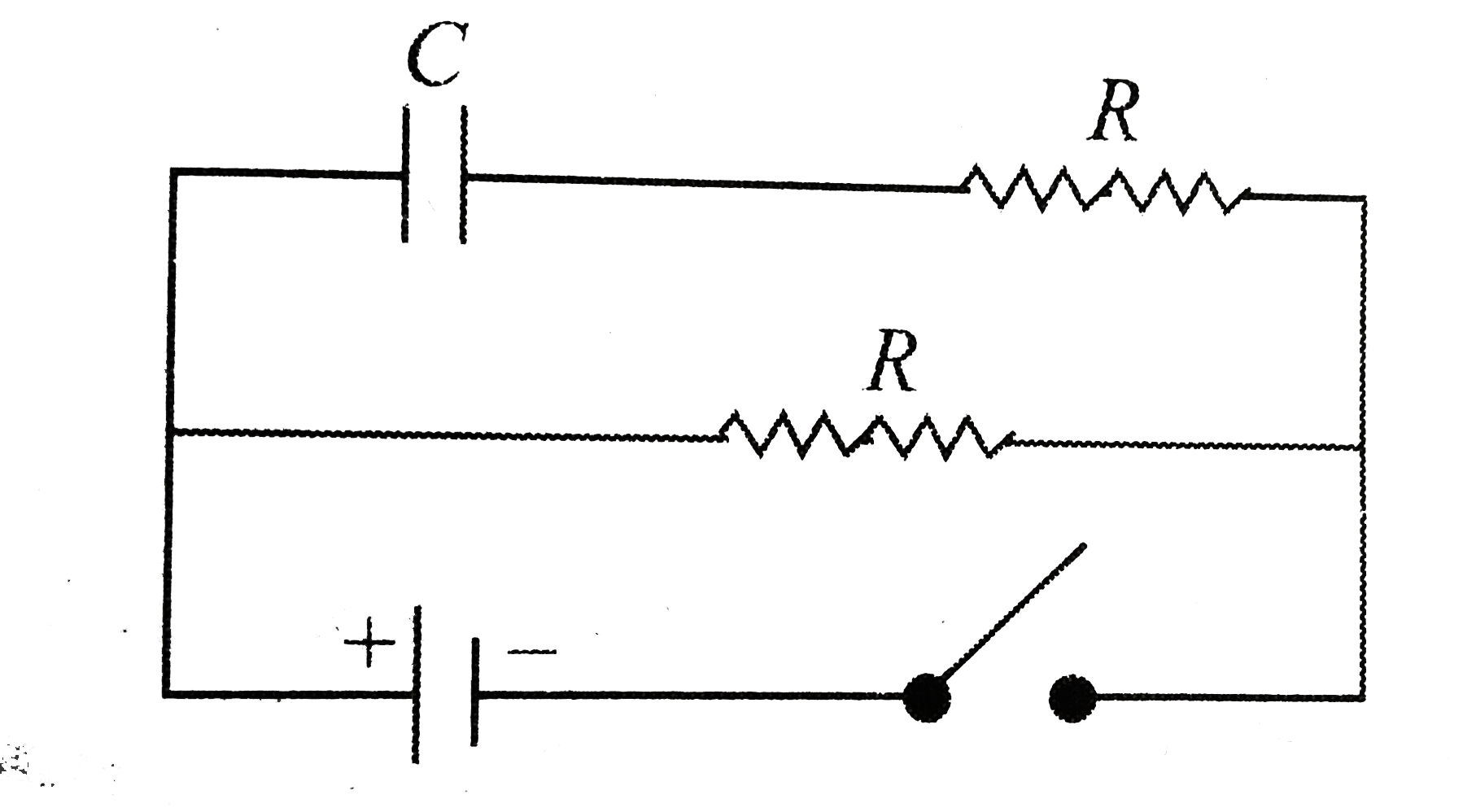 05:30View Solution
05:30View SolutionIn the previous question, if the switch is opened after the capacitor has been charged, it will discharge with a time constant
02:42View SolutionA capacitor of capacitance C has charge Q. it is connected to an identical capacitor through a resistance. The heat produced in the resistance is
05:27View SolutionThe charge on a capacitor decrease `eta` time in time `t`, when it discharging through a circuit with a time constant` tau`
01:43View SolutionTwo identical capcitors `A` and `B` are charged to the same potential and then made to discharge through resistance `R_(A)` and `R_(B)` respectively with `R_(A) gt R_(B)`
02:08View Solutiona capacitor of capacitance `C` is connected to two voltmeter `A` and `B`. `A` is ideal , having infinite resistance, while `B` has resistance `R`. The capcitor is charged and then switch `S` is closed. The reading of `A` and `B` will be equal
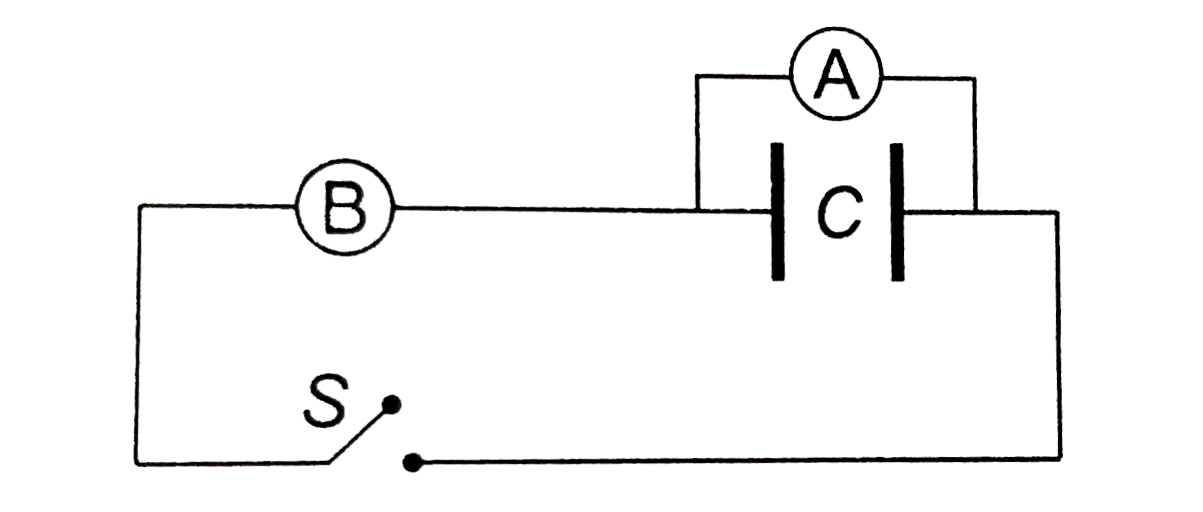 02:22View Solution
02:22View SolutionThe capacitor C is initially without charge. X is now joined to Y for a long time, during which `H_1` heat is produced in the resistance R. X is now joined to Z for a long time, during which `H_2` heat is produced in R
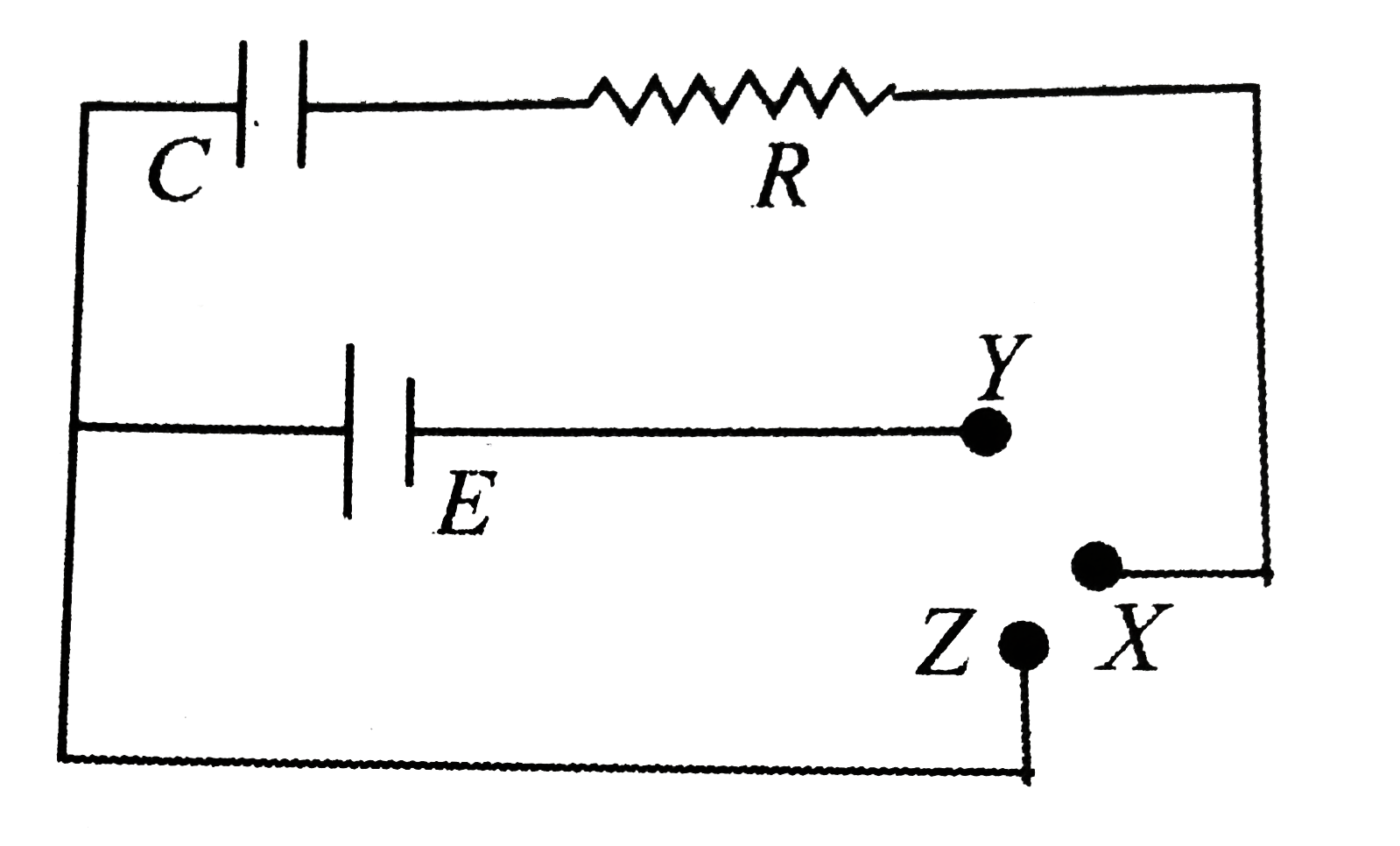 10:29View Solution
10:29View SolutionThe energy supplied by the cell during charging is equal to
01:41View Solutionthree identical capacitor, `A, B and C` are charged to the same potential and then made to discharge through three resistance `R_(A) gt R_(B) gt R_(C)`. Their potential differnece `(V)` are plotted against time `t`, giving the curves `1, 2 ,and 3`. Choose the incorrect option.
 03:16View Solution
03:16View SolutionCapacitor `C_1` of capacitance 1 micro-farad and capacitor `C_2` of capacitance 2 microfarad are separately charged fully by a common battery. The two capacitors are then separately allowed to discharged through equal resistors at time t = 0.
10:40View SolutionIn an `RC` circuit while charging, the graph of `1n i` versis time is as shown by the dotted line in the diagram figure. Where `i` is the current. When the value of the resistance is doubled, which of the solid curve best represents the variation of `1n i` versus time
 02:55View Solution
02:55View Solution
Exercises questions and complete solutions for chapter THERMAL AND ELECTRIC EFFECT oF CURRENT of CP SINGH PHYSICS (HINGLISH) of Class 12
